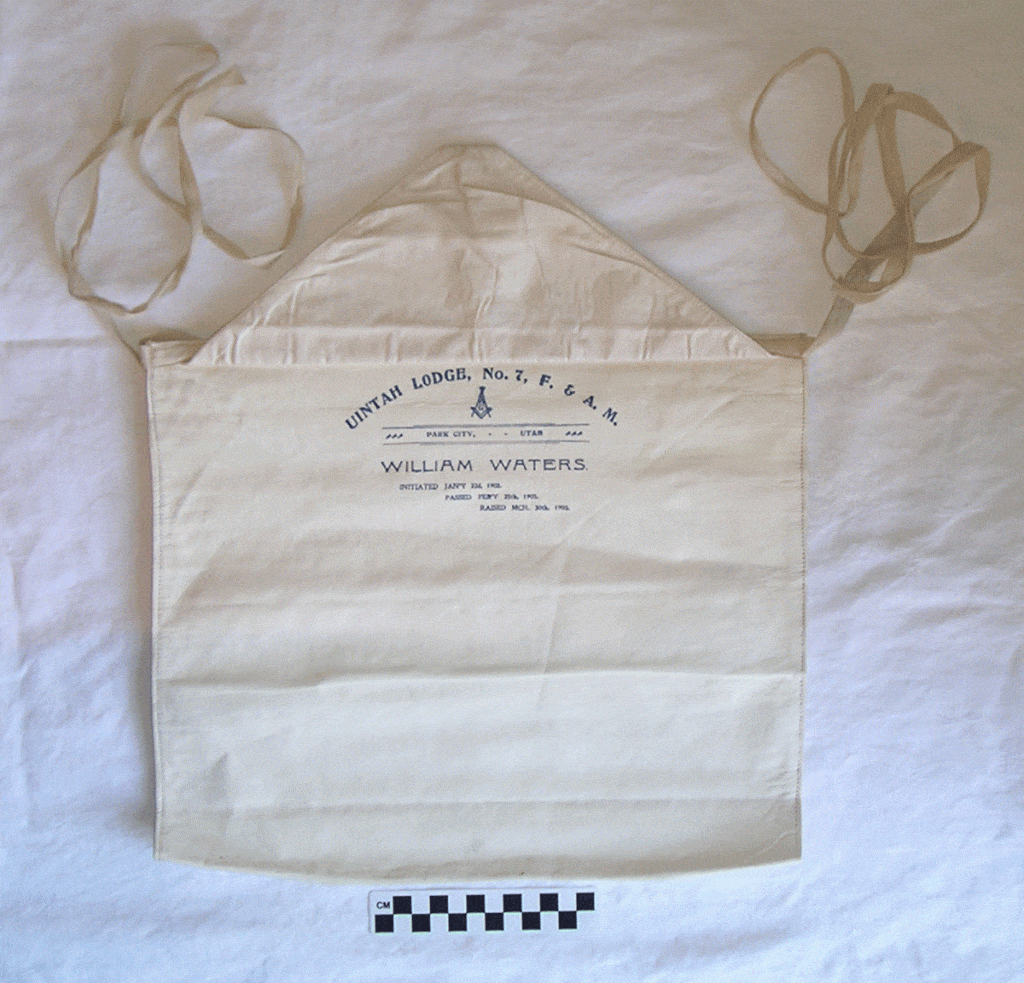The Free and Accepted Masons are a fraternal organization providing men with opportunities for brotherhood, community service, and socialization. Historically, organizations such as the Masons also functioned as an alternative to insurance for a laborer’s family as lodges usually provided financial and social assistance in the event of injury or death. They were especially important in mining communities like Park City, where nearly every miner was a member of one or more of the local branches of these many organizations.
As with most fraternal societies, Masonry is rife with symbols and traditions. The Masonic apron is a perfect example of such symbolism. Its history stretches back to the Middle Ages and the occupational aprons of stonemasons. Traditionally made of animal hide, often sheepskin, the apron gave some protection against the messy and dangerous work of actual masonry. It was large enough to cover the entire front of the body, from chest to ankle, and was tied in the back with thongs stitched to its sides.
While it served a functional purpose for operational masons, the apron eventually developed into a symbolic piece of clothing for modern masons. By the 1800s, both woven and leather aprons had been incorporated into Masonic tradition and were being worn both at meetings and Lodge-sanctioned public events. The apron’s length and design also gradually changed. From its historical full-body length, the apron was eventually shortened to the knee or thigh; the bib over the chest, too, disappeared, its shape becoming more of a triangular or semi-circular flap, usually worn folded down below the waist. Decorations representing all aspects of Masonry also became more popular, everything from silver tassels to blue ribbons to embroidered rosettes.

Credit: Park City Historical Society and Museum
This article’s accompanying picture is a Masonic apron from the early 1900s. It belonged to William Waters. Waters moved to Park City as a young boy with his family in the 1880s. He was initiated into the local Masonic lodge in January 1903. Though his brothers stayed in Park City much longer operating various businesses, William left town in 1908. He moved to Midvale and became heavily involved in local politics. In 1922, he was admitted to the Bar and took up a position as city attorney, in which he served for many years. He continued to be a very active Mason throughout his life and was even a charter member of the Acacia Lodge No. 17 in Salt Lake City. He died of uremic poisoning in 1933.
Waters’ apron is on display at the Park City Museum as a local component to our current traveling exhibit Apron Chronicles: A Patchwork of American Recollections. Aprons and what they stand for can stir powerful memories: recollections of a grandmother canning on a hot summer day, a first job waitressing, or the pride and brotherhood of a Masonic initiation. As Apron Chronicles shows, aprons “are more about life than fabric.” Come explore more stories, now through December.